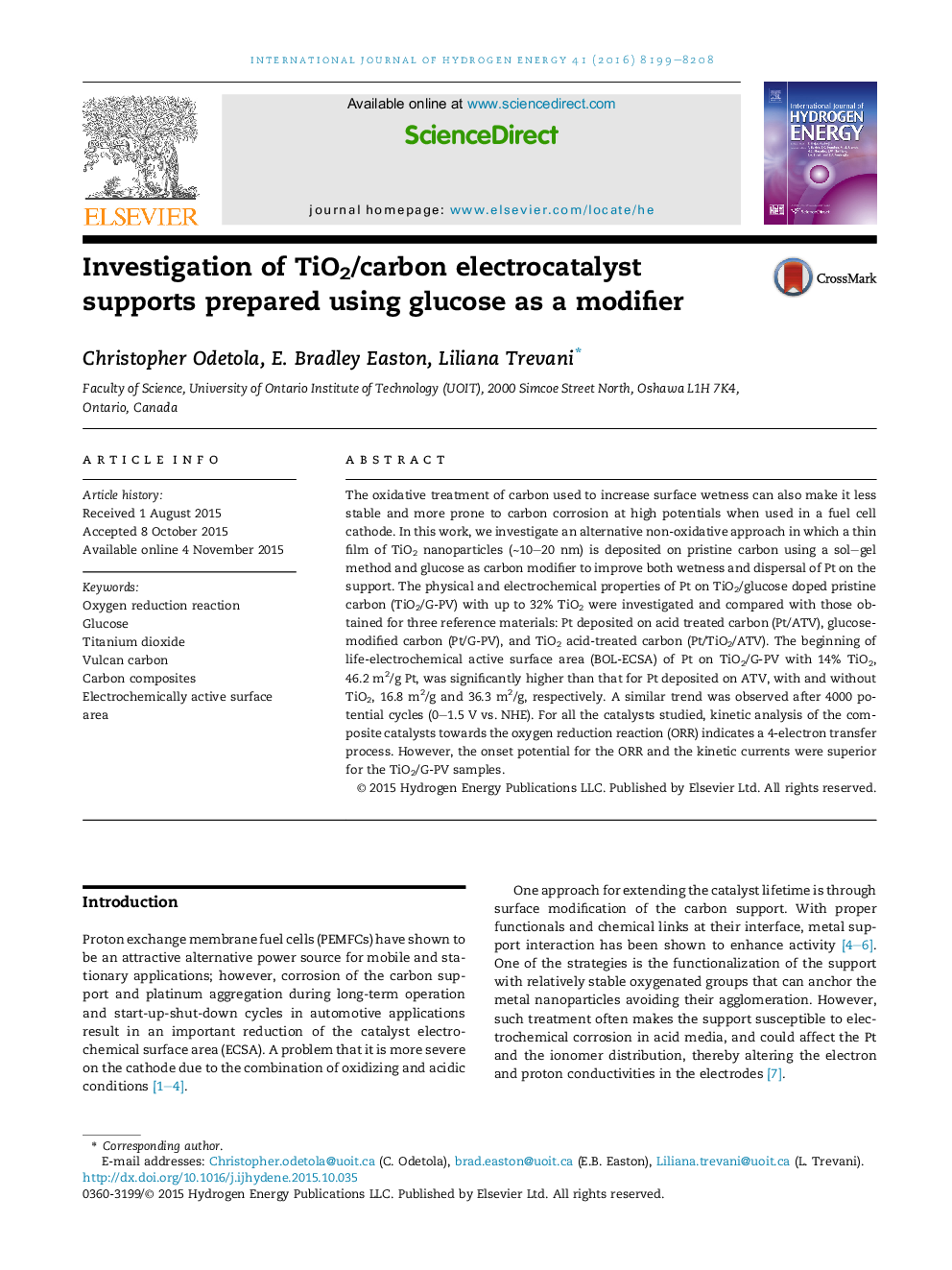| Article ID | Journal | Published Year | Pages | File Type |
|---|---|---|---|---|
| 1277315 | International Journal of Hydrogen Energy | 2016 | 10 Pages |
•Glucose has been used as a modifier for the deposition of TiO2 on Vulcan carbon.•Higher TiO2 loadings were observed for Pristine Vulcan (G-PV) vs. acid-treated Vulcan (G-ATV).•Pt/14% TiO2/G-PV had a larger ECSA and was more stable than all other catalysts tested.•Higher ORR activity was achieved when TiO2 was deposited on carbon using a glucose modifier.
The oxidative treatment of carbon used to increase surface wetness can also make it less stable and more prone to carbon corrosion at high potentials when used in a fuel cell cathode. In this work, we investigate an alternative non-oxidative approach in which a thin film of TiO2 nanoparticles (∼10–20 nm) is deposited on pristine carbon using a sol–gel method and glucose as carbon modifier to improve both wetness and dispersal of Pt on the support. The physical and electrochemical properties of Pt on TiO2/glucose doped pristine carbon (TiO2/G-PV) with up to 32% TiO2 were investigated and compared with those obtained for three reference materials: Pt deposited on acid treated carbon (Pt/ATV), glucose-modified carbon (Pt/G-PV), and TiO2 acid-treated carbon (Pt/TiO2/ATV). The beginning of life-electrochemical active surface area (BOL-ECSA) of Pt on TiO2/G-PV with 14% TiO2, 46.2 m2/g Pt, was significantly higher than that for Pt deposited on ATV, with and without TiO2, 16.8 m2/g and 36.3 m2/g, respectively. A similar trend was observed after 4000 potential cycles (0–1.5 V vs. NHE). For all the catalysts studied, kinetic analysis of the composite catalysts towards the oxygen reduction reaction (ORR) indicates a 4-electron transfer process. However, the onset potential for the ORR and the kinetic currents were superior for the TiO2/G-PV samples.
